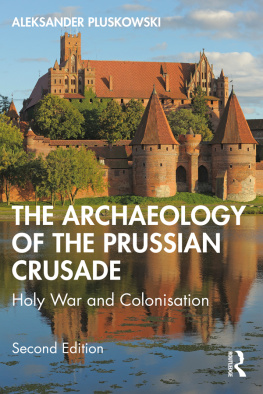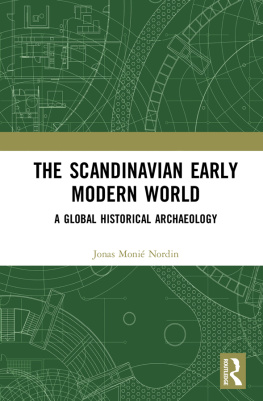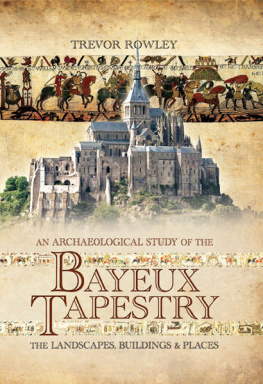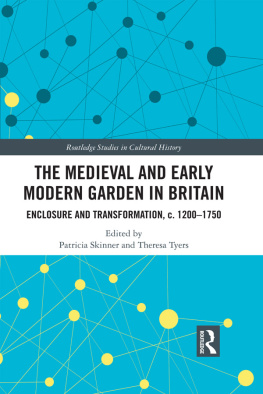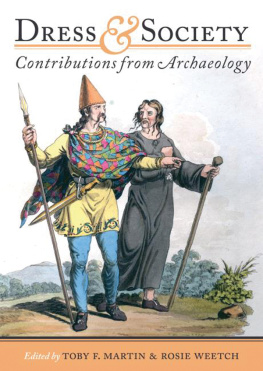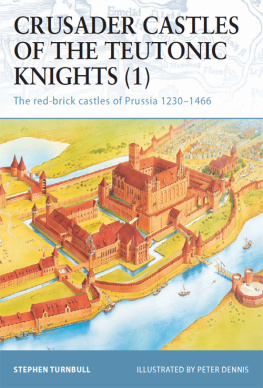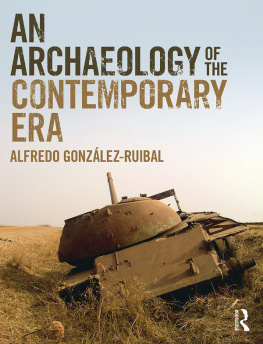
THE ARCHAEOLOGY OF THE PRUSSIAN CRUSADE
The Archaeology of the Prussian Crusade explores the archaeology and material culture of the crusades against the Prussian tribes in the 13th century, and the resulting society created by the Teutonic Order which endured into the 16th century.
It provides an updated synthesis of the material culture of this unique, hybrid society in the south-eastern Baltic region, encompassing the full range of archaeological data, from standing buildings through to artefacts and ecofacts, integrated with written and artistic sources. The work is sub-divided into broadly chronological themes, beginning with a historical outline, then exploring the settlements, castles, towns and landscapes of the Teutonic Orders theocratic state, the character and tempo of religious transformation and concluding with the roles of the reconstructed and ruined monuments of medieval Prussia in the modern world, particularly within the context of Polish culture.
This remains the first work on the archaeology of medieval Prussia in any language, and is intended as a comprehensive introduction to a period and area of growing interest. This book represents an important contribution to promoting international awareness of the cultural heritage of the Baltic region, which has been rapidly increasing over the last few decades.
Aleksander Pluskowski is Professor in Medieval Archaeology at the University of Reading.
Cover image: Malbork castle, Poland. Photograph by Magnus Elander.
Second edition published 2022
by Routledge
4 Park Square, Milton Park, Abingdon, Oxon, OX14 4RN
and by Routledge
605 Third Avenue, New York, NY 10158
Routledge is an imprint of the Taylor & Francis Group, an informa business
2022 Aleksander Pluskowski
The right of Aleksander Pluskowski to be identified as author of this work has been asserted in accordance with sections 77 and 78 of the Copyright, Designs and Patents Act 1988.
All rights reserved. No part of this book may be reprinted or reproduced or utilised in any form or by any electronic, mechanical, or other means, now known or hereafter invented, including photocopying and recording, or in any information storage or retrieval system, without permission in writing from the publishers.
Trademark notice: Product or corporate names may be trademarks or registered trademarks, and are used only for identification and explanation without intent to infringe.
First edition published by Routledge 2013
British Library Cataloguing-in-Publication Data
A catalogue record for this book is available from the British Library
Library of Congress Cataloging-in-Publication Data
A catalog record for this book has been requested
ISBN: 978-1-032-12041-6 (hbk)
ISBN: 978-1-032-12035-5 (pbk)
ISBN: 978-1-003-22276-7 (ebk)
DOI: 10.4324/9781003222767
Typeset in Bembo
by Apex CoVantage, LLC
To the memory of my father, Gregory, who never leaves my thoughts
CONTENTS
Guide
FIGURES
- Unless otherwise stated, all figures are by the author.
- Cover image The castle at Malbork, view of the former main entrance on the western side, with the Nogat in the foreground (M. Elander)
PREFACE AND ACKNOWLEDGEMENTS TO THE FIRST EDITION
The idea for this book developed following my initial work with two colleagues Krish Seetah and Mark Maltby on a faunal assemblage recovered from excavations at Malbork castle led by Maria Dbrowska. However, it was not until I started to teach the archaeology of the Baltic Crusades a few years later at the University of Reading that I realised how valuable a synthesis would be: for myself, my colleagues and my students. As I began to develop a research programme and network exploring the environmental impact of the conquest, colonisation and Christianisation of the eastern Baltic region, my experience of sites, landscapes and material culture rapidly increased, for which I am extremely indebted to my colleagues, collaborators and friends in Poland, Estonia, Latvia, Lithuania and beyond. The very process of writing this book shaped and informed the development of my own research, which in turn has fed back into the text. The end result is not intended as a definitive or comprehensive study such an undertaking would result in a very heavy volume (or more likely a series of volumes) and is the prerogative of far more experienced scholars but rather as an accessible milestone for the field which should be rapidly updated and replaced.
There are many people I would like to thank who have contributed in various ways to the successful completion of this book. First, I would like to thank the staff at the library and archive at the Castle Museum in Malbork, the University library and Institute of Archaeology library at Nicolaus Copernicus University in Toru, the library of the Museum of Warmia and Masuria in Olsztyn, the British Library, the Warburg Institute and Cambridge University Library. All were incredibly helpful in enabling me to access publications and materials. Second, I would like to thank my colleagues without whom this book would not have been remotely possible. Although this book has largely focused on north-east Poland, the broader context and the development of my ideas has benefited from friends and colleagues further afield. In Poland I would like to thank Zbigniew Sawicki, Waldek Jaszczyski, Daniel Makowiecki, Marzena Makowiecka, Marcin Wiewira, Maciej Karczewski, Magorzata Karczewska, Tomasz Nowakiewicz, Dariusz Poliski, Adam Ch, Monika Badura, Magorzata Lataowa, Maria Dbrowska, Leszek Supecki, Janusz Trupinda, Janusz Hochleitner and Mariusz Mierzwiski; in Lithuania Linas Daugnora, Algirdas Girininkas and Vladas ulkus; in Estonia Heiki Valk; in Latvia Gundars Kalni and Zigrda Apala; in Germany Helena Burg and Marc Jarzebowski; in Hungary Jzsef Laszlovszky, Alice Choyke and Laszlo Bartosiewicz, and in Romania Adrian Ioni and Ioan Marian iplic. In the UK I am extremely indebted to Alex Brown, with whom was written; Lisa-Marie Shillito, who read parts of the text and also patiently prepared many of the illustrations; Krish Seetah, Mark Maltby, Ellen Simmons and my colleagues at the Department of Archaeology at the University of Reading, especially Grenville Astill, Roberta Gilchrist and Michael Fulford who have provided me with tireless support and guidance.
I would also like to thank all those who participated in the 2009 European Science Foundation workshop The Ecology of Crusading at Malbork castle, the various sessions on crusading and colonisation at the annual meetings of the European Association of Archaeologists and the first meeting of the project at the Institute of Archaeology of the UMK in Toru in December 2010. I would like to thank the British Academy, the School of Human and Environmental Sciences at the University of Reading, the McDonald Institute for Archaeology Research at the University of Cambridge, the Society for Medieval Archaeology, the Society of Antiquaries of London, the European Science Foundation and the European Research Council for providing the sustained funding which ultimately enabled this book to be written. I would also like to thank Amy Davis-Poynter and Routledge for their patience and support. I would also like to thank Karen Wallace for her help in preparing and editing the text. Finally, I would like to thank Marcin Wiewira, Daniel Makowiecki, Maciej Karczewski, Magorzata Karczewska and Tomasz Nowakiewicz for commenting on sections of this book. Any mistakes in the text are entirely my own.
Next page
